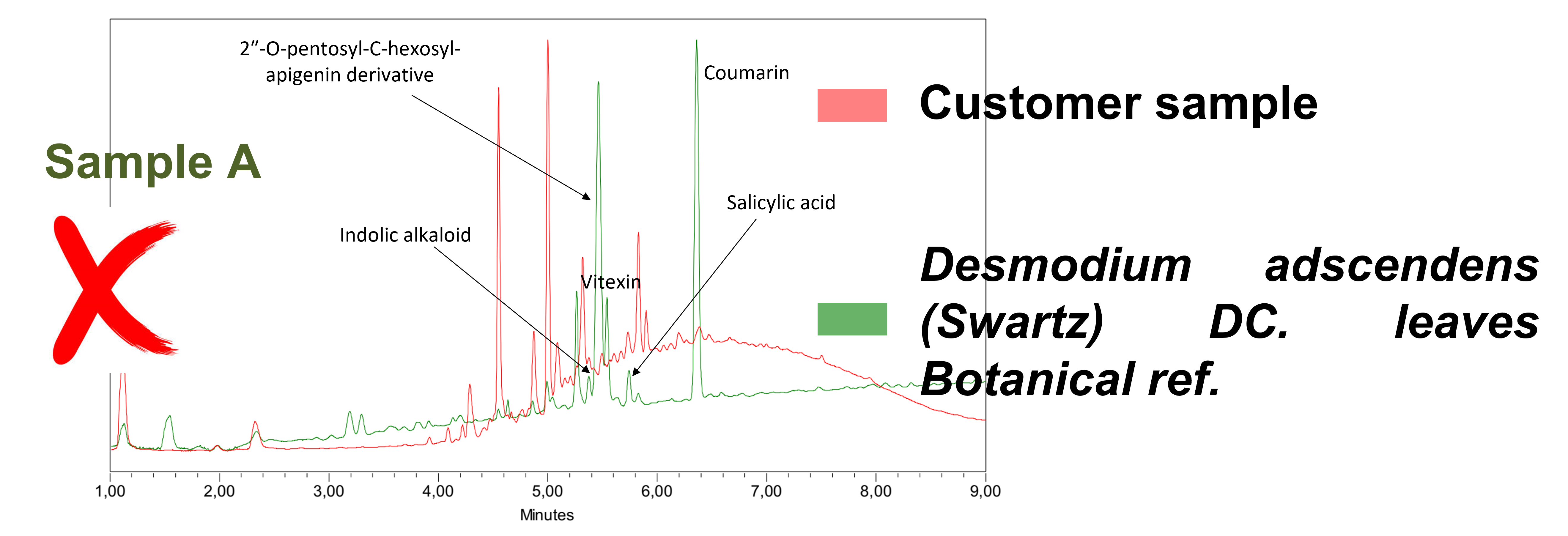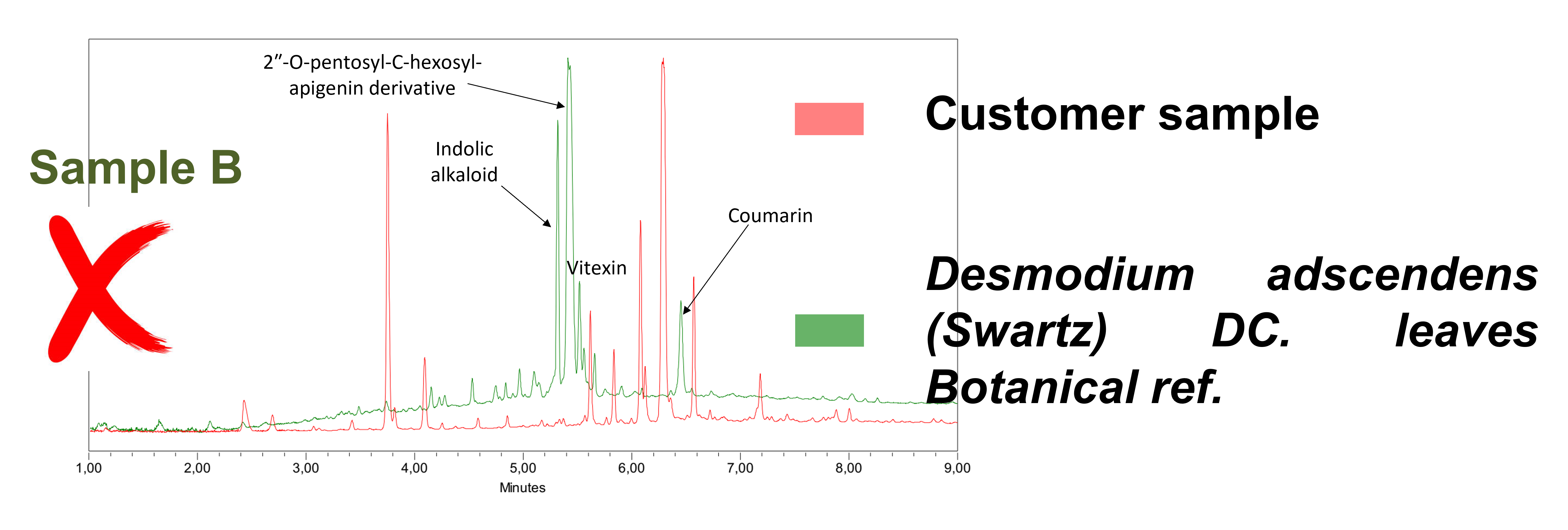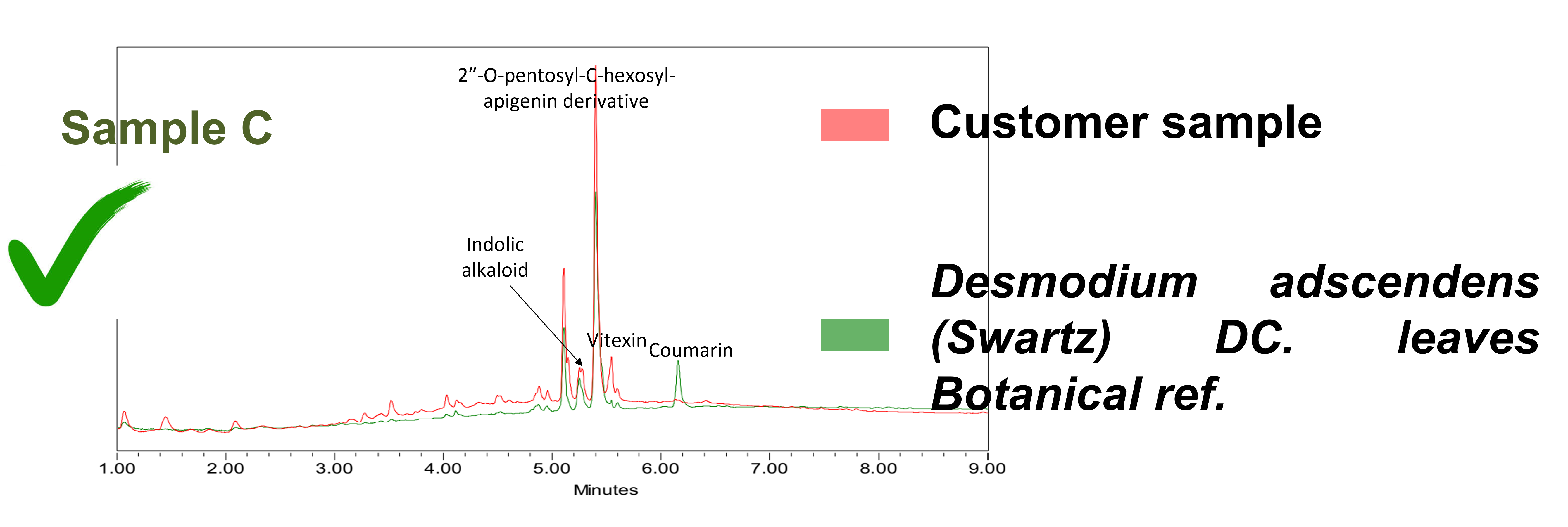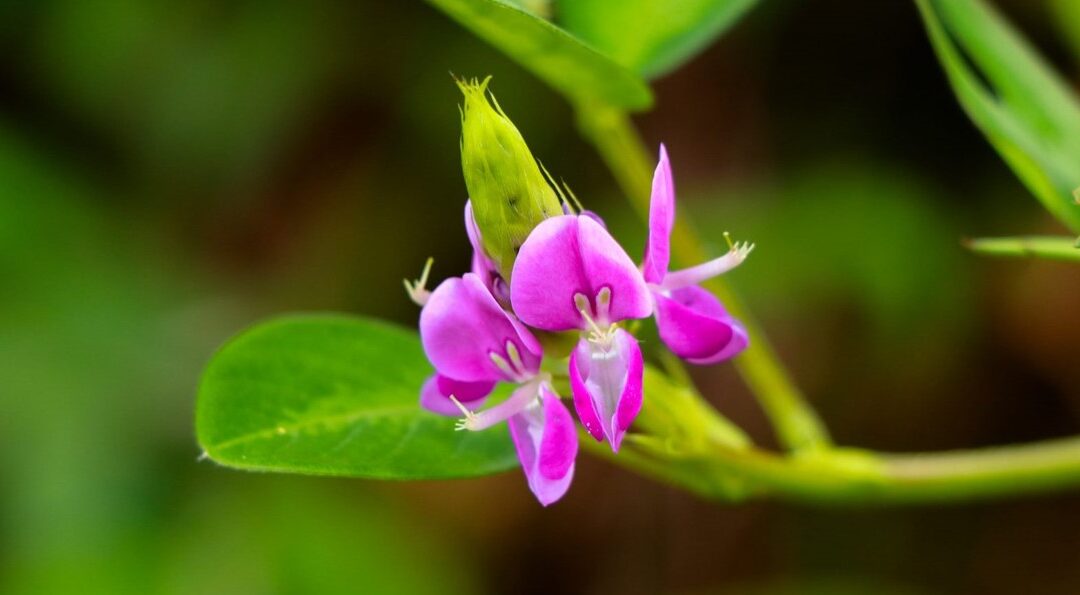
Introduction
Desmodium comes from the Fabaceae family. It´s a native plant form the African humid equatorial zone where it grows by climbing the trunks of trees. This species has been used in traditional medicine for a long time mainly to promote the proper function of the liver. It is the aerial parts, including the leaves, that are used to protect the liver cells from all the damage induced by the hepatotoxic substances, including certain drugs. Due to its high consumption and demand, shortages often occur. We often see more quantities sold than the quantities produced. To meet the high demand, some players sell other species (from genus Desmodium sp.) instead of the species Desmodium adscendens (Swartz) DC. The compositions with any adulterants can therefore be relatively close. In addition, few data are available on the literature making the controls very tricky.

Study
State of the art
Information about the phytochemical composition of the species Desmodium adscendens (Swartz) DC. is relatively limited. Some secondary metabolites have been described as flavones (2″-O-pentosyl-C-hexosyl-apigenin derivative, vitexin and isovitexin), saponins (soyasaponin I), salicylic acid and alkaloids (indole type and phenylethylamine derivatives ). It seems that the chemical composition varies significantly depending on geographical origins (Ghana, Nigeria, Sierra Leone, Togo, Madagascar) making the authentication even more complex. Given the level of complexity of this authentication, an appropriate analysis is therefore necessary in order to obtain as much information as possible. Indeed, a TLC or HPTLC analysis, for example, will only focus on a family of compounds (on flavones, or on alkaloids or even on saponins) and will therefore miss a large part of the composition.
Analysis of customer samples
As part of an annual analysis campaign, 43 commercial dry extracts were analyzed. Of these samples, 28 came out non-compliant. Of these 28 non-compliant samples, 12 samples were too low in secondary metabolites to verify the plant species and 16 were confirmed as having been obtained from another species (i.e. 37% of all samples).
Among the different cases, some have significantly different compositions but presenting numerous correlations in terms of chemical families. This is the case of sample A, for example, which does not correspond to the composition expected for leaves of D. adscendens (Swartz) DC. but which still seems to belong to the genus Desmodium sp. We also find significantly different profiles (sample B) with almost no correlation with the botanical reference. They seem to be very different species but not from the genus Desmodium sp.
Finally, among the 43 samples analysed, 15 of them (35%) showed completely expected profiles for D. adscendens (Swartz) DC leaves (see sample C).



Conclusion
Carrying out an accurate authentification control is key in botanical extracts in general but even more for the Desmodium samples due to subtle frauds difficult to detect. How to ensure the quality of your Desmodium samples?
By proving the presence of Desmodium, the absence of other plant species, the absence of enrichment and by verifying the quantities of claimed active ingredients.

